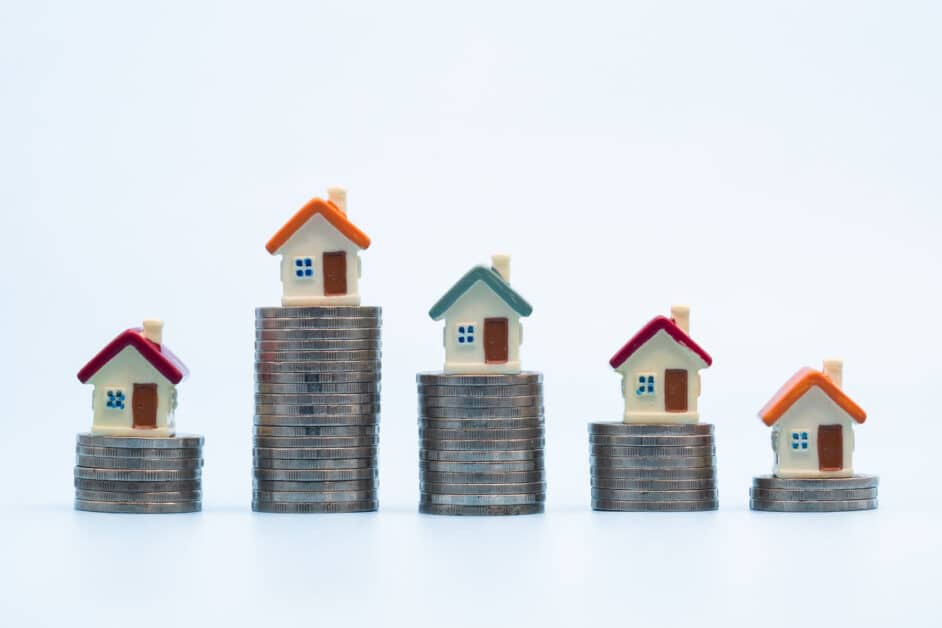Choosing High-ROI Pre-Construction Projects

Funny how a “quiet” market can make the most noise, isn’t it? In 2025, sales of pre-construction condos in Toronto and other Ontario cities dropped 92% year over year, the lowest point in over three decades.
Yet, somehow, under that hush, a few golden opportunities are quietly taking shape. You can almost feel the tension: fewer cranes in the sky, but sharper investors circling, calculating.
Now, when we talk high-ROI pre-construction, we’re not dreaming in headlines. We mean projects that, historically, at least, manage 10 to 15% annual appreciation, often layered with rental yields that make holding worthwhile. These aren’t quick flips; they’re long-game plays, the kind that reward patience and research.
So, where do you start? With the right mix of location, developer reliability, and a keen read on market tides. That’s where the real money hides.
Hello, my name is Jatin Gill, and in this post, I’ll walk you through how to spot pre-construction condos with the highest potential ROI.
Read: How to Calculate ROI on a Pre-Construction Condo
What Makes a Pre-Construction Project High-ROI?
ROI isn’t some mysterious acronym whispered by finance folks in suits. It’s really just a story about value: what you put in, what you get out, and how much sleep you lose (or save) in between.
In real estate, especially pre-construction, the math can feel simple on paper but slippery in practice. Here’s the gist: Total Return = (Appreciation + Rental Income) – Costs.
But the real trick? Knowing when the numbers are quietly stacking in your favour.
In 2025, with pre-construction sales scraping 35-year lows, the brave few who buy now might just look like geniuses five years from now. Why? Because downturns hide discounts the same way winter hides the seeds of spring.
If you’re trying to spot a high-ROI project, look for a mix of these ingredients:
- Appreciation potential: Early-bird pricing often sits ~20% below what the market will catch up to once the building’s standing tall.
- Rental yields: New builds tend to fetch 4–6% thanks to modern layouts, EV chargers, and those sleek coworking nooks everyone secretly wants.
- Tax perks: Between HST rebates and capital gains advantages, the CRA isn’t always the villain here.
- Risk balance: Delays happen, six months, maybe a year, but with the right developer, time often fattens returns rather than killing them.
High-ROI projects don’t scream. They whisper. You’ll find them in growth corridors where cranes haven’t crowded the skyline yet, in floor plans that rent themselves, in builders who finish what they start.
And if you can tune your ear to that whisper, amid the market noise, that’s when investing stops being guesswork and starts feeling like foresight.
Read: What to Do if Your Pre-Construction Condo Project Gets Delayed or Cancelled

Tip 1: Prioritize Location and Emerging Growth Areas
If you’ve been in real estate long enough, you already know the oldest cliché in the book: location, location, location.
But the funny thing about clichés? They’re usually true! Eight times out of ten, your ROI has less to do with marble countertops and more to do with what’s happening three blocks away.
Some people chase floor plans; smart investors chase postal codes.
In 2025, that means looking where others aren’t looking yet. The core is cooling, Toronto’s downtown still sits with nearly 55% of pre-con units unsold, while places like Kitchener-Waterloo, Guelph, and Hamilton quietly heat up.
These are the new frontiers, humming with tech jobs, infrastructure upgrades, and that slow-burn gentrification that always tells the same story: “Give it five years.”
Read: How to Read a Pre-Construction Condo Floor Plan
Here’s what to keep an eye on:
- Proximity to transit: Projects hugging GO lines or future LRT stops (Hamilton’s new extensions come to mind) can bump value by 15–20% almost overnight once operational.
- Job & population growth: Look for regions pulling steady inflows; for example, from 2018 to 2023, the Waterloo Region added 9,100 tech jobs, a 45.5% increase.
- Infrastructure momentum: Government spending on highways, hospitals, or even a university expansion usually means the area’s long-term value is quietly inflating.
- Avoid the noise: Oversaturation kills ROI. Skip zones drowning in inventory and opt for balanced pockets. Markham, Caledon, and even parts of Niagara are sitting pretty right now.
The trick isn’t guessing which city will explode next; it’s recognizing momentum before the headlines do. When cranes start dotting the skyline and Starbucks slips in beside the corner café, you’re already late.
So drive the area, talk to locals, smell the air (yes, really). A good investor reads the market, but a great one reads the street.
Read: Best Pre-Construction Condo Projects Near Toronto’s Transit Hubs

Tip 2: Analyze Pricing and Value Proposition
Price tags lie. Or, at least, they tell half the truth. The other half hides in what you’re getting for the number they’re printing in bold on the brochure.
A pre-construction project that looks “cheap” can still be overpriced if it’s in a sluggish zone, while another that seems steep today might look like a bargain when keys finally change hands three years later.
It’s not about chasing the lowest PSF, it’s about chasing value that grows while you sleep.
In this market, the difference between a solid buy and a bad bet usually comes down to due diligence. A few rules of thumb I swear by:
- Benchmark the price: Make sure the project sits 10–20% below comparable resale units in the same area. That’s your built-in cushion.
- Look for incentives: Developers get creative in slow markets; free upgrades, capped levies, or extended deposits can quietly add 5–10% of extra value.
- Check affordability metrics: If projected rent can cover 80–100% of carrying costs, you’ve found a sustainable hold, not a headache.
- Compare comps: Scan similar launches nearby. If one’s offering glossy amenities at the same price per foot, the overpriced one’s suddenly obvious.
- Assignment flexibility: Projects that allow resale before closing give investors optionality, though, fair warning, HST rules in Ontario can complicate those profits.
Read: Pre-Construction Condo Incentives & Promotions
One mistake I see too often? People buy the dream rendering, not the math. The glossy marketing sells you skyline views; ROI hides in spreadsheets and clauses.
So, next time a sales rep hands you a price list, take a breath. Ask the tougher questions. Compare. Negotiate. Don’t let the excitement of the launch party drown out your inner accountant, because that quiet number crunching, that’s where the real return begins.
Read: Top Questions to Ask at a Pre-Construction Sales Office
Tip 3: Evaluate Developer Reputation and Project Quality
You can have the best floor plan, the perfect corner unit, and a postcard skyline view, and still lose sleep if the developer can’t deliver.
Every veteran investor has a story (or three). The builder that promised the moon but handed over drywall cracks instead. The project that looked unstoppable until financing “unexpectedly” dried up.
Read: Top 14 Condo Developers in Toronto
The emails that suddenly stopped coming. It happens more often than you’d think, especially when markets wobble. So, before signing anything, dig. Developers leave digital footprints, and those footprints tell stories. Here’s what I always look at:
- Track record: Stick with builders who’ve been around at least a decade, ideally with a low delay history. Names like Tridel or Treasure Hill don’t panic when the wind changes direction.
- Financial health: Check their Tarion registration, Google recent completions, and don’t ignore whispers about insolvency. In 2025, a few Toronto mid-tier builders are already on shaky ground.
- Build specs & finishes: Energy-efficient systems, solid insulation, EV charging stations, these aren’t just nice-to-haves; they boost resale appeal by 10–15%.
- Buyer reviews: Online forums aren’t gospel, but patterns matter. Aim for developers who consistently earn 4+ stars on multiple platforms.
- Warranty & protection: Remember, Ontario’s Tarion Warranty isn’t a suggestion; it’s your parachute if something goes wrong post-closing.
A solid developer won’t just hand you keys; they’ll hand you peace of mind. And that, frankly, is priceless in a pre-con market where delays are running six to twelve months on average. The truth is, ROI isn’t built in spreadsheets alone; it’s poured into the foundation by people who either know what they’re doing… or don’t.
Read: New Home Warranty Programs (Tarion) Explained

Additional Tips: Market Trends, Amenities, and Financing
Here’s the thing about real estate trends: they move slowly, then suddenly. One minute, everyone’s waiting for rate cuts; the next, they’re lining up outside sales offices again.
If you want to stay ahead of the curve, zoom out for a second. Don’t just chase numbers; follow the signals. The little shifts most people scroll right past.
A few that matter right now:
- Sustainability’s no longer a bonus. Green roofs, solar panels, and smart thermostats; those features used to feel trendy. Now, they’re practically mandatory. Eco-certified buildings don’t just age better; they often qualify for rebates and draw higher-end tenants.
- Amenities that actually matter. Forget the showy rooftop pool no one uses. What sells (and rents) today are functional perks: co-working lounges, EV stations, parcel rooms, quiet zones. The work-from-home crowd will pay 5–10% more for that convenience.
- Interest rates are easing — slowly. The Bank of Canada’s gradual cuts are breathing life into stalled projects, and developers are feeling brave again. Lock in early; today’s “temporary” rates might look like bargains in hindsight.
- Deposit structures are loosening up. Some builders are stretching payment schedules to 15–20% over 18–24 months, a quiet gift for investors juggling multiple properties.
- Diversify. Always. Not every project will hit gold. Pair a high-ROI pre-con buy with a steady rental property, maybe even a resale in a mature area. Balance is underrated, but it’s how portfolios survive storms.
And here’s a final thought: the best investments rarely feel comfortable when you make them. If the numbers make sense but the market mood is anxious, that’s usually your cue to lean in, carefully, but confidently.
Because by the time everyone’s nodding and buying again, the window’s already closing.
Read: Buying Pre-Construction: What are Deposit Structures?
Step-by-Step Guide to Selecting Projects
All right, let’s bring it home. Because theory’s nice, but at some point, you’ve got to roll up your sleeves and pick something. Pre-construction investing isn’t a guessing game; it’s a method. A rhythm. Follow it right, and you’ll stack the odds quietly in your favour.
Here’s how I do it (and how you probably should too):
- Research the market like it owes you money.
- Start with TRREB and CMHC reports; they’re not thrilling reads, but they’re the backbone of good timing.
- Narrow down 3–5 growth areas that show real, trackable momentum, not just hype.
- Screen projects with a fine-tooth comb.
- Compare by location, price per square foot, and incentives.
- Attend VIP previews if you can; those early looks often come with quiet perks the public never sees.
- Vet the developer and the details.
- Cross-check Tarion listings, completion history, and any online chatter.
- Bring in your lawyer during the 10-day cooling-off period; that’s not a suggestion, that’s survival.
- Run the numbers — twice.
- Build out a 5-year ROI projection.
- Factor in closing costs, potential delays, and that one expense everyone forgets: occupancy fees.
- Secure your spot, then monitor like a hawk.
- Track construction updates and deposit milestones.
- Plan your exit strategy early, whether it’s assignment, long-term hold, or resale post-registration.
If you map this out, it’s less about luck and more about rhythm. Good investors don’t rush; they sequence. Research, vet, project, secure, monitor. Simple, but not easy.
And here’s the secret nobody prints in brochures: your best deal rarely feels like one when you sign. It’s the quiet buy, the one your gut likes but your nerves question, that often pays out when everyone else finally wakes up.
Read: Why You Need a Real Estate Lawyer for Your Property Purchase

Bottom Line
When you invest in pre-construction, you’re not just buying a property, you’re buying time. Time for appreciation to build, infrastructure to rise, and communities to evolve around your investment.
Every successful investor knows the secret: the biggest wins happen before the first crane lifts. By understanding where growth is headed, who’s behind the project, and what kind of value the surrounding ecosystem can create, you put yourself in the rare position to grow equity before even moving in.
If you’re ready to explore pre-construction projects with strong ROI potential, reach out to our team at Platinum Condo Deals. We’ll help you navigate floor plans, incentives, and market data, so your next move is built on strategy, not chance.
Jatin Gill, an esteemed authority in real estate writing, is celebrated globally for his unparalleled expertise. With over 20 years in the industry, he has authored more than 1,000 SEO-friendly articles covering every facet of real estate. Specializing in pre-construction projects, Jatin's extensive knowledge spans all real estate topics. His content is a go-to resource for anyone seeking comprehensive, insightful, and up-to-date information in the real estate market.
Learn MoreFAQs
High-ROI projects are those that deliver solid appreciation plus rental income over time, often in the 10–15% annual range historically.
Location typically accounts for 70–80% of ROI. Amenities matter, but if a unit isn’t near transit, jobs, or growth corridors, even the nicest layout won’t appreciate as much.
Track record, financial stability, project quality, buyer reviews, and warranties. Developers with 10+ years of experience and low delay histories are safer bets for consistent ROI.
Compare PSF to resale benchmarks in the same area, check developer incentives, and ensure projected rent covers a good chunk of carrying costs. Avoid overpaying in high-inventory zones.
Yes, but carefully. They allow you to sell your unit before completion, potentially locking in profits. However, Ontario’s HST rules and fees can impact net gains.
Factor in appreciation, projected rental income, taxes, fees, and potential delays. Running multiple scenarios helps you understand risk-adjusted returns before committing.
Additional Resources















Awards & Achievement










Subscribe for the Latest Condo Deals
Apologies, our subscription list for this month is now full. Please register on our website to secure your spot for next month. Thank you for your interest!

